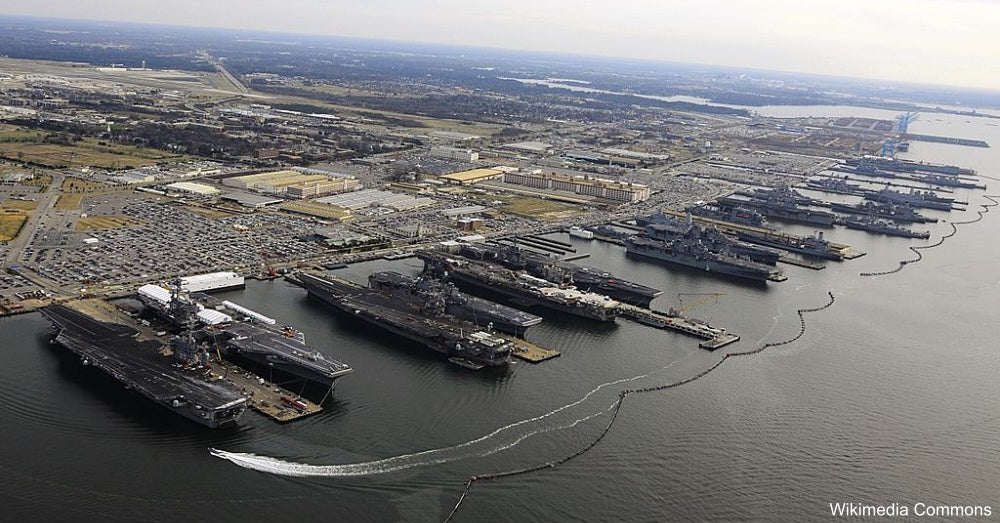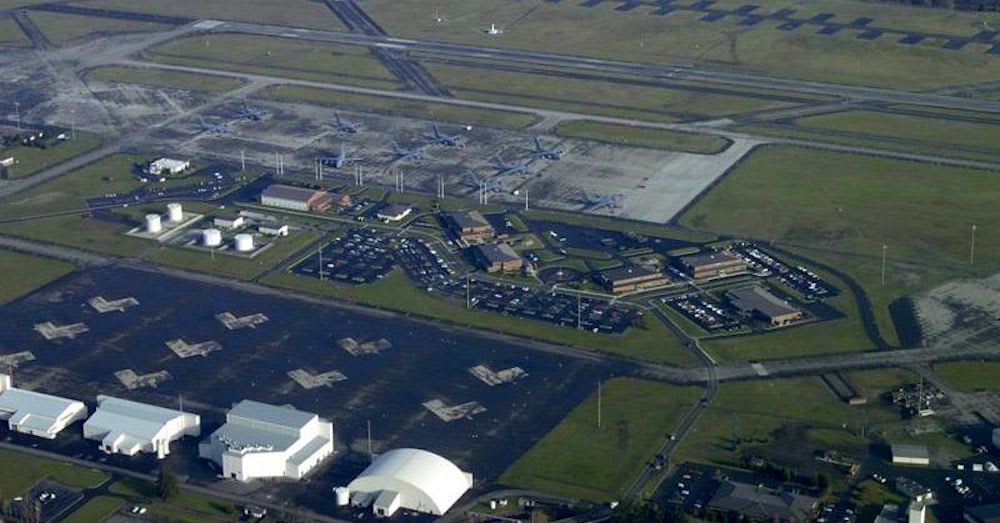8 Of The Most Advanced Military Bases The U.S. Operates
Shopify API
The United States not only has one of the largest militaries in the world, but it also has some of the largest and most advanced military bases as well. These bases are located all over the country as well as overseas, with the Ramstein Air Base in Germany being one such example. Out of the military installations operated by the U.S., here are some of the most advanced.
8. Fort Bragg
Fort Bragg's size alone makes it one of the most renowned military bases not only in the country, but around the globe. Located in North Carolina, it houses 238,646 people over its 163,000 acres, making Fort Bragg the world's largest military base in terms of population (as of 2017). Other than the massive number of military personnel, students, civilians, and other folks who call this base home, Fort Bragg is known for serving as a place that fostered the development of military tactics during World War II. The base houses several special units such as the 82nd Airborne Division and U.S. Army Special Operations Command.
 Wikimedia Commons
Wikimedia Commons7. Fort Campbell
Fort Campbell is just shy of Fort Bragg when it comes to population numbers, boasting 234,914 people over its 105,000 acres. Like Fort Bragg, this military base was active during World War II and continues to be a vital cog in the U.S. military machine. Located on the Kentucky-Tennessee state line, it houses the 101st Airborne Air Assault Division, 5th Special Forces Group, and 160th Special Operations Aviation Regiment.
 Flickr/LouisvilleUSACE
Flickr/LouisvilleUSACE6. Joint Base Lewis-McChord
Joint Base Lewis-McChord, which combines the U.S. Army's Fort Lewis and the U.S. Air Force's McChord Air Force Base, is one of the largest in total size while being the fourth biggest in population. It covers 414,000 acres over its four geographical areas, and has a population of 209,486 people. Its location on the Puget Sound in Washington state and its air fleet that boasts the C-17A Globemaster III aircraft allow this base's air force units the ability to reach anywhere in the world.
 Wikimedia Commons/David Brooks
Wikimedia Commons/David Brooks5. Naval Base Coronado
Naval Base Coronado includes eight different installations, all located near San Diego in Southern California. Its facilities include the Naval Amphibious Base Coronado, the Mountain Warfare Training Camp Michael Monsoor, the Naval Air Station North Island, and the Naval Auxiliary Landing Field on San Clemente Island. This is the naval heart of the West Coast, and one of the homes of the famous Navy SEALs. Here, they go through Basic Underwater Demolition training.
 Wikimedia Commons
Wikimedia Commons4. Fort Detrick
Fort Detrick, located in Frederick, Maryland, is the home of the U.S. Army Medical Research Institute of Infectious Diseases. Basically, the deadly diseases known to humanity are housed and researched here, diseases like the plague, anthrax, and the Ebola virus. It's the only Department of Defense lab equipped to handle Biosafety Level 4 viruses, meaning it has insanely advanced safety mechanisms to keep the deadly stuff inside.
 Wikimedia Commons
Wikimedia Commons
3. Cheyenne Mountain Air Force Station
This base, located in Colorado, may not actually house a Stargate, but it is an impregnable fortress. Established in 1966, it lies under a granite mountain reinforced with doors that can resist 25-ton blasts.
 U.S. Air Force/Senior Airman Tiffany DeNault
U.S. Air Force/Senior Airman Tiffany DeNault2. Fort Hood
Spread out over 214,968 acres, Fort Hood is the world’s largest military base by area. Located in Killeen, Texas, it has a population of over 217,000, and is the only post in the country that is capable of holding two armored divisions. Fort Hood now serves as a mobilization station for Army Reserve and National Guard units. Its residents have included notable celebrities Elvis Presley and Jackie Robinson.
 Photo: Wikimedia Commons
Photo: Wikimedia Commons
1. Nellis Air Force Base
Nellis Air Force Base, located in Nevada, also boasts advanced technology. The base has taken advantage of the bright desert sun to add the continent's largest solar power plant. The 72,000 solar panels produce 30 million kilowatt-hours of energy per year.
 U.S. Air Force/Master Sgt. Kevin J. Gruenwald
U.S. Air Force/Master Sgt. Kevin J. GruenwaldThe U.S. military is constantly evolving, adopting new technology, and developing new tactics that make the bases and installations it operates of critical importance. Each training center, fort, and base has its own purpose, making each one vital to the United States defense system.

